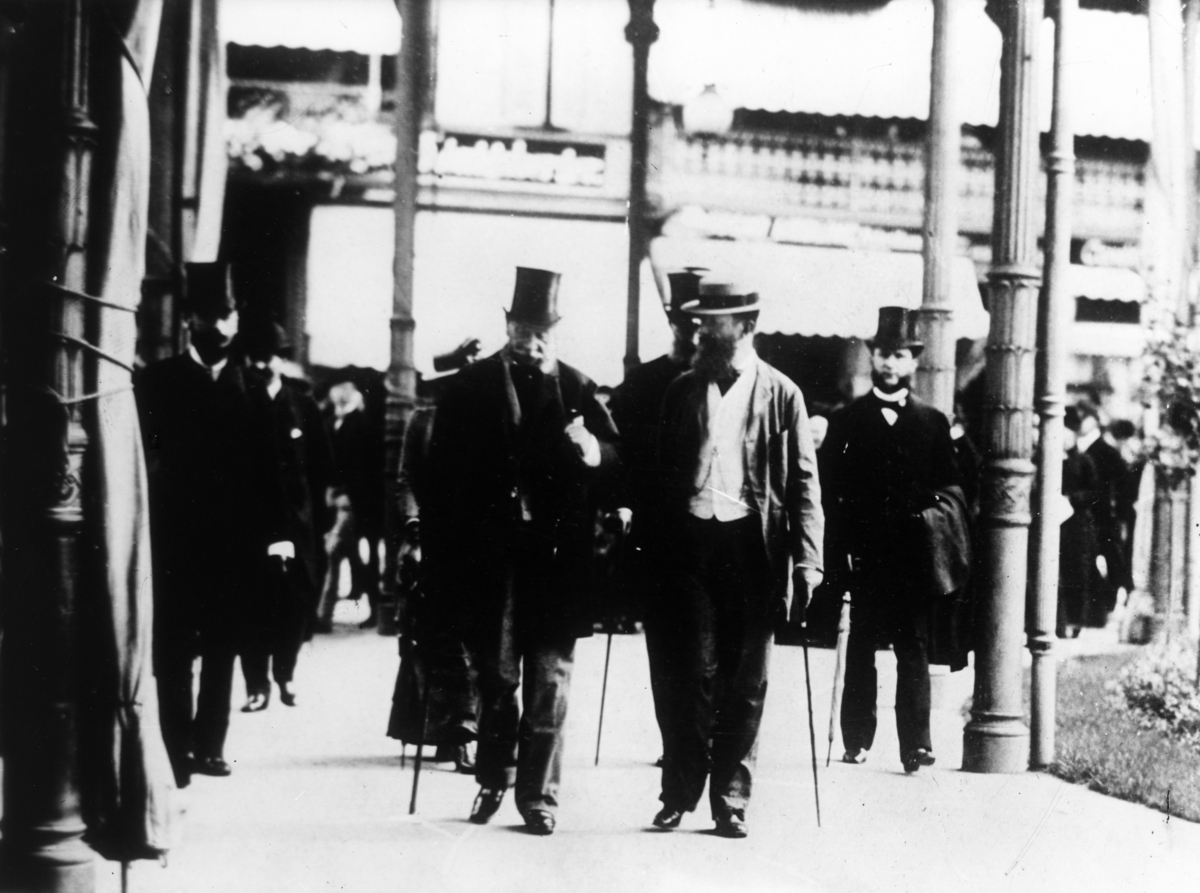Abstract
On June 2, 1878, having escaped injury from an assassination attempt
by Max Hödel barely three weeks earlier, Kaiser Wilhelm I was seriously
wounded when Dr. Karl Nobiling fired a shotgun blast from a window
overlooking Unter den Linden. When the Kaiser began appearing in public
again in September 1878 he was often greeted by local delegations of
women and children who wished the “aging hero”
[Heldengreise] a full and rapid
recovery.
This photograph shows the emperor recovering from his wounds at Bad
Ems, accompanied by his doctor Ernst Schweninger (1850–1924).
Schweninger was a physician to both kings and princes. Beginning in
1883, he helped Prince Bismarck cope with his gargantuan appetite for
food, drink, and tobacco. As a result of the strict diet that
Schweninger prescribed, Bismarck’s weight fell from 272 pounds in 1879
to 255 pounds in 1881 to 222 pounds in the spring of 1884: postcards
were printed showing these statistics as a way to market a “Bismarck
Scale” [Bismarck-Waage]. The
chancellor’s jaundice, facial neuralgia, migraine headaches, digestive
problems, and insomnia declined significantly over this period, although
relapses occurred in the decades ahead.
